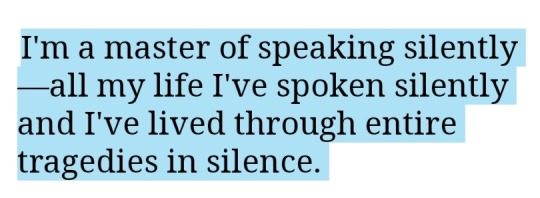The Fetish of Silence and the Femme Fragile: Paul Gauguin's Decadent Imagination & the Concept and Culture of the Fin-de-Siècle
Don't wanna be here? Send us removal request.
Text
“The coffin was covered with a simple white cloth and surrounded with masses of flowers, the sunflowers that he loved so much, yellow dahlias, yellow flowers everywhere. It was, you will remember, his favourite colour, the symbol of the light that he dreamed of as being in people’s hearts as well as in works of art.” (Emile Bernard, taking about vincent van goghs funeral.) — this line always hits me, because vincent van goghs last words were, “La tristesse durera toujours.” which translates to, “the sadness will last forever.” and he was such a deeply unhappy man, filled with a burning desire to paint the most beautiful things to mask his ugly, dark, sad thoughts. he struggled and its said that he even ate yellow paint, just so he could feel brighter inside and to someone who’s never gotten to a low enough point where they would truly do anything to try and make themselves better, this seems outrageous and mad. but I get it. he wanted to be happy, he wanted to feel as bright as the paintings he always tried to portray. he wanted sunflowers to grow from his ribs and starry night to decorate his veins but instead, he found himself coated in a fresh paint of a deep blue sadness and as his brush hit the paper, he tried to get it out. and when you get to that point, you look for every single way out you can find. some might say he was mad because he cut off his ear and ate yellow paint. but i say he’s brave. because although he shot himself, he drug himself back home, put on a brave face and never showed a sign of weakness. (and no, i’m not glorifying his death, im glorifying a man who never got the praise he deserves for the light he left behind in people’s hearts.) he left this world unknown, as less than an artist, as a simply sad man who believed his art would never get anywhere but his own hands. but as his work is so widely known today, we can finally pay him the tribute he deserves and that’s that, maybe his sadness lives on forever, but so does his beautiful art and his passionate soul. and that’s gotta count for something.
#vincent van gogh#van gogh#artists#death#tribute#sadness#the sadness will last forever#poet#poetry#spoken word#excerpts#excerpt from a book i am writing#excerpt from a book i'll never write#quotes#book quotes#love#darkness#spilled ink#spilled thoughts
94 notes
·
View notes
Quote
“I am telling you about these canvases, and about the first one in particular, to remind you that one can express anguish without making direct reference to the actual Gethsemane, and that there is no need to portray figures from the Sermon on the Mount in order to express a comforting and gentle motif.”
-Vincent Van Gogh in a letter to Emile Bernard, c. 20 November 1889
11 notes
·
View notes
Photo

Emile Bernard (French, 1868 - 1941)
Self-portrait, 1890
Oil on canvas
94 notes
·
View notes
Photo

Emile Bernard - Deux femmes vues de dos, vers 1911
99 notes
·
View notes
Photo

Emile Bernard (French, 1868-1941)
Three Breton Women, N/D
Oil on canvas, 25 x 31 cm
125 notes
·
View notes
Quote
I owe you the truth in painting.
Paul Cézanne to Émile Bernard
10 notes
·
View notes
Photo

Emile Bernard (French, 1868–1941)
Madeleine in the Bois d'Amour, 1888
Oil on canvas, 137 x 163 cm
Musée d'Orsay, Paris, France
251 notes
·
View notes
Photo

Le pont à Pont-Aven, Emile Bernard, 1891.
Photo: cc https://www.flickr.com/photos/clairity/ https://creativecommons.org/licenses/by/2.0/
13 notes
·
View notes
Photo

Emile BERNARD (1868-1941) Baigneuse à Venise, 1926
154 notes
·
View notes
Photo

Émile Bernard (1868–1941) Self-Portrait with Portrait of Gauguin 1888
Oil on canvas 46 x 56 cm
Van Gogh Museum, Amsterdam (Vincent van Gogh Foundation)
#emile bernard#émile bernard#bernard#art#paintings#1888#1880s#19th century#postimpressionism#synthetism#cloisonnism#modernism#france#oil#van gogh museum#amsterdam#self portrait#portrait#symbolism
95 notes
·
View notes
Photo

Émile Bernard (French, 1868-1941), Femme assise sur un canapé rose [Woman sitting on a pink sofa], c.1887. Oil on canvas, 31 x 40 cm.
179 notes
·
View notes
Photo

Self-Portrait Dedicated to Vincent van Gogh with portrait of Bernard (Les Miserables), 1888 oil, canvas. 45 x 55 cm Van Gogh Museum, Amsterdam, Netherlands
98 notes
·
View notes



